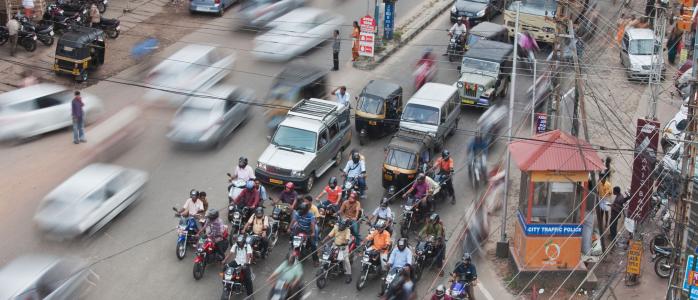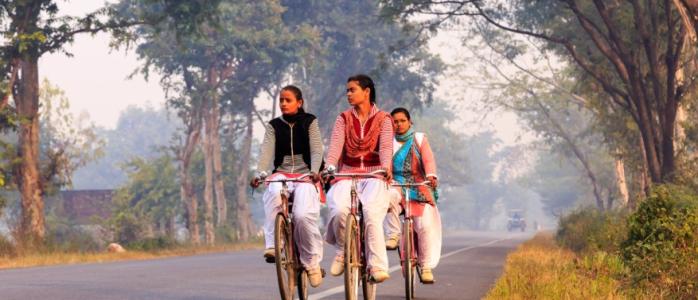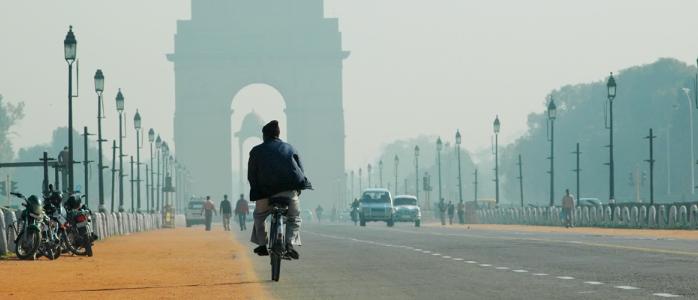



Over the last few weeks, newspapers in Lucknow have been replete with the news of traffic congestion in the city and the mismanagement of public transport vehicles on roads. Many important streets and intersections in the city such as Charbagh, Polytechnic etc. have been in the limelight for these traffic snarls. Since buses occupy more space on roads due to their structures and autos and e-rickshaws because of their high volumes, they are perceived as the major culprit behind the congestion. These perceptions resulted in banning of e-rickshaws on many routes in the city.
In reality buses, autos, tempos and e-rickshaws comprise less than five per cent of the vehicles on the roads of Lucknow. However, as per the Lucknow Smart City Proposal and other mobility studies, these vehicle modes carry around 15-20 per cent of the city's commuters daily. Over the last decade, Lucknow has been urbanising at a rapid pace and the vehicular population in the city has also increased manifold as a result. As per the Ministry of Road Transport & Highways (MoRTH) data, there have been more than 13 lakh vehicle registrations in Lucknow in the last decade (since 2013) and 90 per cent of them are private vehicles, mostly two-wheelers and four-wheelers. During the same period, the number of buses have remained stagnant while the auto rickshaws and Vikram tempos population has not increased due to a ban on their permits in the city. This has led to a supply gap in the city transport system, which has resulted in a substantial increase in the e-rickshaw population as well.
As per media reports, there are more than 30000 e-rickshaws in Lucknow 1. Their charging requirements are largely catered informally and not through a public charging station for EVs. Commuters who are highly dependent on public transport and Intermediate Public Transport (IPT) like autos, vikrams, e-rickshaws usually come from lower income segments of the population. Women and the elderly form a big chunk of this section. The greatest advantage of these mobility options is their affordability. However, these user segments often complain of severely limited supply of such mobility services.
Solutions to these urban mobility issues will require both short and long-term measures.
Firstly, the short-term measures shall include managing challenges of daily operations. These IPT modes need support infrastructure such as stands, stops, parking, queuing facilities etc. The buses in the city still have some designated stops and depot infrastructure. A similar planning needs to be done for autos, tempos, and e-rickshaws. Dedicated stops and halting and parking bays will also reduce the chaos and traffic disruption at boarding-alighting places and improve traffic speeds.
Second, key parking locations developed for these IPT modes can also serve as EV charging hubs. It must be noted that there is a pick up in the pace of electrification in this segment of commercial transport. These parkings must have pay and use facilities of rest areas, drinking water, toilets, servicing and maintenance workshops and food supply etc.
Thirdly, medium-term solutions must include integrating the IPT modes with formal public transport modes such as the buses and metros. Autos, tempos, e-rickshaws etc. are essential mobility suppliers in the city and if well planned, they can meet significant mobility demands of a city at affordable rates. However, a powerful coordinating authority like Unified Metropolitan Transport Authority (UMTA) can sync these different transport modes in Lucknow. The best cities in the world including London, Paris, Singapore etc. have a single authority managing the transportation in the city. They also make sure that the land use of the city is very well integrated with the public transport so that there is a minimum requirement of using private transport.
Fourthly, the long-term solutions include a major investment in bus transport infrastructure. Lucknow today has around nine buses per lakh population against the norm of 40 buses per lakh population (as per MoHUA). This needs to be a priority for the city government and must reflect in their annual financial allocations. They should also consider procuring more buses through the Urban Transport Fund, established by the state government. Moreover, a prerequisite for efficient public transport services is good quality pavements for walking and cycling networks in the city, especially for last-mile connectivity.
“An advanced city is not one where even the poor use cars, but rather one where even the rich use public transport,” said Enrique Penalosa, former mayor of Bogotá, Colombia. Private vehicle usage will only increase pressure on the already overwhelmed streets of Lucknow. They would further add to the air and noise pollution and road safety concerns. The city authorities and the Urban Development Department must think on the lines of a UMTA establishment, bus enhancement and IPT integration to ensure that the limited resource of land in this ever growing city is wisely managed.
The city of Lucknow must regain its glory of humanised streets, to showcase its rich culture, art and architecture. New and evolving technologies in the domain of shared mobility and public transport must be adopted which intelligently integrate with land use and infrastructure. This will also help curb the increasing use of private vehicles and thereby reduce traffic jams and pollution in cities.
Samradh Singh Chauhan is a Research Analyst and Himani Jain is a Senior Programme Lead at the Council on Energy, Environment and Water (CEEW), an independent not-for-profit policy research institution. Send your comments to [email protected].






Add new comment